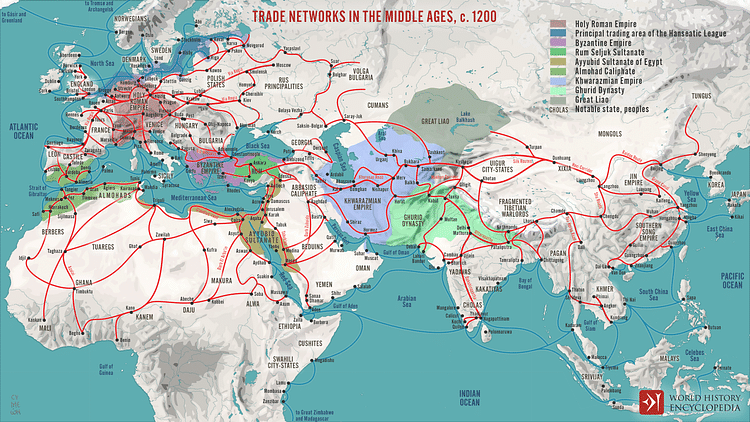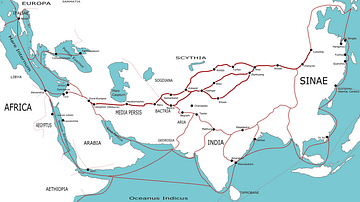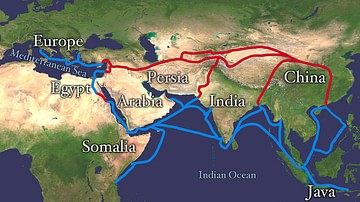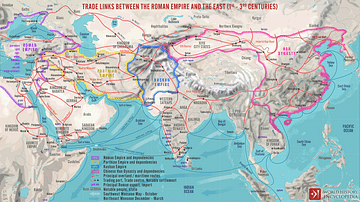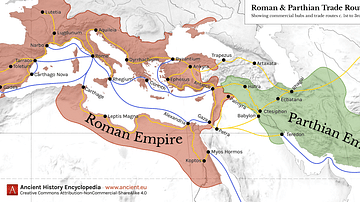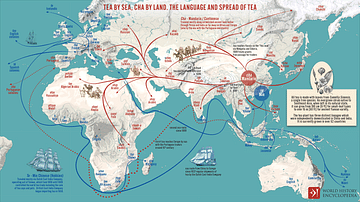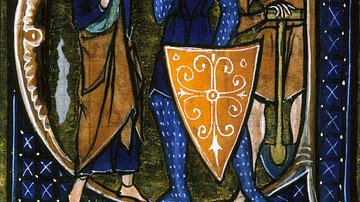Illustration
A map illustrating the interconnectivity and extent of the global trade networks at the onset of the 13th century after the centuries of decline and isolation following the collapse of the Western Roman Empire. The conditions were beginning to change, and trade between Christian and Muslim realms expanded (although still marred by a state of continuous hostilities), turning the Mediterranean once more into a bridge between the European West and the lands of North Africa and the Middle East. As Europe recovered from the destruction and mayhem of invasions and war, it had goods to sell - the export of cloth and metalworks could pay for imported silks, spices, and exotic goods from the Muslim world, Byzantine Empire, China, India, and beyond.
Cite This Work
APA Style
Netchev, S. (2022, May 24). Trade Networks in the Middle Ages, c. 1200. World History Encyclopedia. Retrieved from https://www.worldhistory.org/image/15923/trade-networks-in-the-middle-ages-c-1200/
Chicago Style
Netchev, Simeon. "Trade Networks in the Middle Ages, c. 1200." World History Encyclopedia. Last modified May 24, 2022. https://www.worldhistory.org/image/15923/trade-networks-in-the-middle-ages-c-1200/.
MLA Style
Netchev, Simeon. "Trade Networks in the Middle Ages, c. 1200." World History Encyclopedia. World History Encyclopedia, 24 May 2022. Web. 19 Apr 2024.
